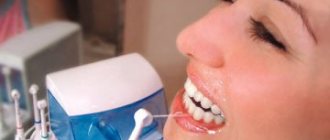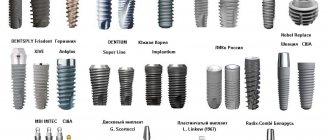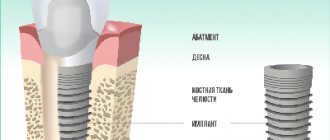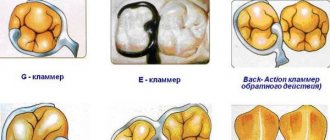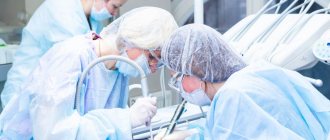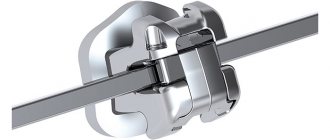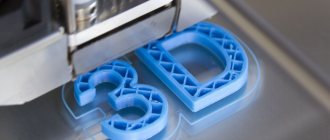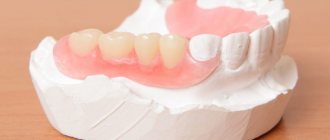All equipment used in dentistry can be divided into several types. It is convenient to use the following categories:
- Dental units, chairs
- Dental handpieces and micromotors
- Dental compressors
- X-ray dental equipment
- Dental peripherals and additional equipment
- Dental lighting
- Disinfection and sterilization
- Dental furniture
How different types of dental equipment are designed and how they work
Let's analyze the structure of dental equipment
using the example of a dental unit - a key element without which a dentist’s work is impossible. Dental chair / unit - complex complex equipment contains and combines several important subsystems: electrical / mechanical, hydraulic and pneumatic. Moreover, even in the most modern installations with a huge amount of electronics, it is impossible to do without water, air and aspiration systems.
Main elements of the dental unit:
- Patient chair (dental chair)
- Doctor's block (Unit)
- Control unit, pedals, panels and switches
- Assistant unit (water block, vacuum cleaner, aspirator / saliva ejector, spittoon / sink)
- Shadowless lamp
- Compressor
- Micromotors, dental handpieces
Dentsply Sirona Intego Pro
Dentsply Sirona Intego Pro
In the last review we recommended the Intego installation. But that was in the category up to 1,000,000 rubles. In this price category, we offer a model from the same line, but with the eloquent Pro prefix, which indicates improved characteristics and a wider range of capabilities. For its price, Intego Pro offers optimal functionality and numerous additional options. For example, a comprehensive hygiene system is integrated into the installation to simplify the treatment of suction and water supply hoses of instruments after each patient, at the end of the working day, as well as for a complete automatic sanitation of the entire system once a month. To ensure simple and intuitive operation, the unit is equipped with a foot pedal and an intuitive EasyTouch touch screen. The universal assistant module on an extended bracket is designed so that you will be equally comfortable either alone or in pairs with an assistant.
The installation has the ability to integrate endo functions. By displaying the apex locator measurements on the screen, the doctor can constantly monitor the depth of canal treatment during endodontic treatment. In addition, it is possible to adjust the speed and torque.
Characteristics:
- Dimensions: 2100 x 2000 x 800 mm;
- Number of places for tools: 5;
- Patient chair: Electromechanical;
- Tool supply: Optional;
- Type of saliva ejector and vacuum cleaner: Ejector;
- Lamp: LED View Plus operating light up to 40,000 Lux.
Price: to find out the price, click the “Where to buy” button
WHERE CAN I BUY
The device of the dentist's unit of the dental unit
The doctor's block or Unit contains certain control elements (in modern dental equipment these are touch-sensitive keys or mechanical switches, protected from moisture and providing convenient handling). Also in the doctor's block is the main working dental instrument. Units (blocks) are divided into two types: with top tool feed and bottom feed.
Dental units with top feeding of instruments are distinguished by a fairly convenient instrument return system. But the doctor’s movements are limited by the length of the sleeve, and in general, working on such a setup has its own specifics.
Design of dental unit (equipment)
, where a bottom feed is provided, can be called more ergonomic, the devices do not hinder the movement of the dentist, and the sleeves are longer and are designed for any possible position of the patient and the doctor, however, he must constantly monitor the tips and their position; it is much easier to allow the tip to fall and damage here. more likely, especially during work and disinfection.
If this happens, you must immediately contact an engineer to diagnose and repair dental equipment, since even a small mechanical defect can lead to failure of the micromotor tip or more serious problems.
Drive types
The drive is a device for transmitting energy from the installation to the handpieces, the most significant part of the drill.
Drives are classified according to the type of tip installation:
- Air - tips are installed at the end of the sleeve. These can be turbine handpieces, air micromotors, handpieces for professional hygiene and oral cleaning, built-in air micromotors on air sleeves (installed using a connector) and handpieces intended for endodontic operations.
- Electric - electric micromotors are installed on them. Motors can be brushed or brushless, as well as piezoelectric scellers.
There is another classification option - according to the type of rotation transmission from the motor to the handpiece:
- Rigid sleeves – has rigid transmissions with cords, consisting of many links.
- Flexible hoses – has transmissions with flexible shafts made of wires.
- Sleeveless gears - instead of sleeves, electric and pneumatic electric motors are attached to the tip or even built into it.
Each type is worth talking about separately.
Hard
Hard sleeve
Devices in which the rotor makes from 10 to 30 thousand revolutions in 60 seconds are equipped with rigid sleeves. The rotating motion is transmitted from an electric motor located inside the device to the tips.
Sleeve components:
- tip holder;
- first and second knee;
- kernel;
- a cord that is stretched across all parts of the structure.
Drills, where the bur rotation speed is up to 10 thousand per 60 seconds, do not require a supply of coolant to the operating instrument. If the speed reaches 30 thousand in 60 seconds, then in this case the device needs cooling. The coolant is air, water or a mixture of both.
Special tubes are attached to the sleeve, through which cooling is supplied to the instrument.
Turbine
Used in turbine installations. It transmits compressed air and coolant from the engine to the handpiece or motor. The sleeve is a hose. The material of manufacture is rubber or polyvinyl chloride.
Inside the sleeve are small rubber tubes and, sometimes, optical fiber. The sleeve is secured using connectors on both sides: for the tip and for installation.
Flexible
It is used less and less, only in cars whose speed is 10 thousand revolutions in 60 seconds.
The components of the sleeve are:
- flexible shaft;
- elastic long spiral.
Together they form a movable rod. The upper end of the sleeve is connected to the shaft of the electric motor. The lower end has an additional flexible rod that provides greater maneuverability. The rod is protected by a case and on top by a tube made of fabric or plastic. A tip holder is installed at the free end.
How is the management of a dental unit structured and organized?
The design of the control unit of the dental unit
, as a rule, is divided into two parts - switches and a small control panel are in the doctor’s module.
The pedal of the dental unit is a separate external unit. Often, the pedal can be used to control the position and tilt of the chair, the speed of rotation of the instrument, and other aspects of the operation of the dental unit. The functional pedal simplifies the doctor’s work as much as possible, freeing his hands for examination and therapeutic manipulations.
How does the pedal work and what does it consist of?
Structurally, the pedal consists of a multi-position switch (or smooth regulator) and a force/pressure level reading unit. The pedal is connected by cable to a separate connector, which is very convenient, since if necessary, the pedal can be disconnected for repair/maintenance/cleaning or temporary replacement.
Recommendations when choosing
According to dentists, it is appropriate to follow some tips on what to look for in order to avoid mistakes when choosing.
- The design is ergonomic and should best suit the individual characteristics of the doctor for comfortable work.
- Manufacturer. It is important not to buy the first model you come across, but to compare at least three from different manufacturers with an excellent reputation, supplied to the Russian market for at least 10 years.
- Necessary equipment without unnecessary functions with a full range of options necessary for a specialist.
- Safety, convenience for patients.
- Match the design and color scheme of the dental unit to the interior of the clinic.
- If necessary, check the possibility of restructuring for children.
- Reliability, maintainability, availability of spare parts, components, possibility of service, warranty repairs.
- Compliance of the structure, brand, design with the professional image of the doctor.
- Studying dentist reviews about a specific model will help you choose the most suitable one so as not to waste your money.
- Mandatory certification. Without a registration certificate of compliance with Russian and European standards, it will be impossible to go through the equipment licensing procedure.
- Warranty term and conditions. Carefully study the manufacturer's warranty, which should include not only equipment repairs, but also the cost of spare parts.
Device of the dental assistant unit
Modern auxiliary units are designed in such a way that they can be controlled (if necessary) by the doctor himself. At the same time, the possibility of control for the nurse is also provided in many installations.
What does the assistant unit consist of?
- valve body
- vacuum cleaner
- aspirator / saliva ejector
- spittoon/sink
Hydraulic unit
— purification system, multi-stage water treatment, water supply. Can also be used to store distilled water in the unit
Saliva ejector/aspirator
and
a dental vacuum cleaner
are technically very similar systems and can sometimes even be connected to the same compressor (but more often, different units are used for these tools).
Saliva ejection systems can be found much more often; they are found in many installations. At the same time, a portable system is also used, which is not technically a part. installations.
How does a saliva ejector work?
The saliva pump directly includes the compressor itself, which provides vacuum supply/aspiration, a system of tubes, filters, valves, a power unit, its own control panel, and a connection system to the general system of the dental unit.
Stationary or rotating sinks/spittoons are also now available in most installations, but the standard allows them to be replaced with disposable kidney-shaped containers.
The design of a shadowless lamp, with the exception of the method of attaching it to the dental unit itself and the ability to control it from a common panel, is no different from conventional shadowless medical lamps.
Dental compressors use a special type of dental compressor design to ensure maximum silence during operation.
The doctor's unit can be equipped with additional tools:
- a scaler (air or electric) is a device that allows you to carry out a number of dental procedures completely painlessly, but the main thing is to clean the enamel from plaque;
- a physiodispenser is a multifunctional device that can be used to solve many surgical and therapeutic functions, most often for implantology.
- Polymerization dental lamps - for working with a special type of dental materials that require polymerization.
Classes
In terms of staffing, technical capabilities, clinical and aesthetic qualities, as well as cost of the dentist. installations are divided into three groups.
Economy
The number of functions in these installations does not exceed the required minimum level. Working with them takes a little longer because the doctor needs to change instruments more often. The mechanism is of high quality, comfortable for both the doctor and the patient. The design is modest, not distinguished by sophistication.
Examples: “Unik T Standard”, “QL-2028” (Pragmatic), “AJ AX AJ11”.
Video review of “QL-2028” (Pragmatic)
Business
Higher quality. The range of adjustments is higher. The ability to use and adjust a wide range of instruments is available - accordingly, such a mechanism allows doctors to perform a significant amount of work in a short period of time.
The equipment includes additional equipment - a photopolymerization device, an ultrasonic piezoelectric scaler, tip illumination and other devices.
The control system has control functions, more convenient and ergonomic. The price category is at an average level. Equipment of this category is most often used in clinics.
Examples: “KaVo PRIMUS 1058 S”, “Chirana Denta”l (Diplomat Lux), “Tempo 9”, “Ajax 18”, “DARTA 3000”.
Video review of “Ajax 18”:
Elite
Only the most advanced technologies are used to produce premium products. The functionality has been expanded, especially in the field of programming - control from a computer, you can monitor the condition of your teeth on the monitor - even the most microscopic nuances are visible.
The equipment is distinguished by its original design and individual stylish design. The highest price category.
Examples: KaVo ESTETICA E80 T, Stern Weber, Planmeca.
Presentation "KaVo ESTETICA"
Additional dental equipment
For treatment to be effective, it is necessary to make a correct diagnosis. A wide variety of equipment types are used for these purposes:
- a radiovisiograph is an electronic device that allows you to display an x-ray image of a tooth directly on a computer monitor, i.e. you can obtain an image almost in real time;
- systems that allow teeth whitening;
- An apex locator is a special instrument that is used to measure the length of root canals.
The dental office must use sterilizers (autoclaves, dry heaters, quartz units) - equipment necessary for removing microorganisms from dental instruments.
Contact us: we will answer any questions about the equipment. We will help you check the current condition. We will conduct joint remote diagnostics. Or we’ll come for a full on-site inspection.


